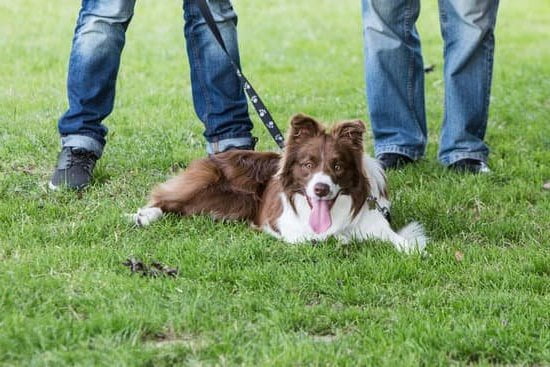What is a dog crate trained? Dog crate training is a method used by many pet owners to provide their dogs with a safe and secure space of their own. In this article, we will delve into the concept of dog crate training, its benefits for both dogs and their owners, as well as how to effectively implement this training method.
Crate training offers numerous advantages for dogs, including aiding in housetraining, providing a sense of security, and preventing destructive behaviors when left unsupervised. For pet owners, crate training can make traveling with your dog easier, help with managing separation anxiety, and ensure the safety of your furry friend in various situations.
Choosing the right crate size for your dog is crucial to the success of crate training. A crate that is too small can be uncomfortable for your pet, while a crate that is too large may not provide the cozy den-like environment that dogs naturally seek. In the following sections, we will discuss how to select the appropriate size crate for your dog and provide a detailed guide on how to effectively crate train your furry companion.
Benefits of Crate Training for Dogs and Their Owners
Crate training is a valuable tool for both dogs and their owners, providing numerous benefits that can enhance the overall well-being of your furry companion. One of the primary advantages of crate training is that it helps to create a sense of security and comfort for your dog. By having a designated safe space, dogs can retreat to their crate when they feel stressed or overwhelmed, mimicking the den-like environment they would seek out in the wild.
Reduced Anxiety and Stress
Furthermore, crate training can also help reduce anxiety and stress in dogs, especially during times when they need to be confined or separated from their owners. Dogs that are properly crate trained often exhibit less destructive behavior, such as chewing or excessive barking, which can be a relief for pet parents. Additionally, crate training can be particularly beneficial for housebreaking young puppies, as they learn to hold their bladder and bowels while inside the crate.
Safe Traveling and Vet Visits
Another significant benefit of crate training is that it promotes safety during travel or vet visits. A properly trained dog will view their crate as a familiar and comfortable space, making car rides or visits to the veterinarian less stressful for both the pet and owner.
In emergency situations, having a dog that is comfortable in a crate can also ensure their safety and prevent them from escaping or getting injured while being transported. Ultimately, crate training provides numerous advantages that contribute to a happier and healthier relationship between dogs and their owners.
How to Choose the Right Crate Size for Your Dog
When it comes to crate training your dog, selecting the right crate size is crucial for a successful training experience. A crate that is too small can make your dog feel cramped and uncomfortable, leading to resistance towards being in the crate. On the other hand, a crate that is too large may defeat the purpose of creating a den-like environment for your dog. So, how do you determine the correct size for your furry friend?
The general rule of thumb when choosing a crate size is to ensure that your dog has enough space to stand up without bumping their head, turn around comfortably, and lie down with their legs extended. It’s important to consider your dog’s current size as well as potential growth if they are still a puppy.
Remember, the idea behind crate training is to provide a safe and cozy space for your dog, not to confine them in a restrictive or uncomfortable environment.
If you have a puppy that will continue to grow significantly in size, you may opt for a larger crate with an adjustable divider panel. This way, you can gradually increase the space as your pup grows into their full size.
It’s also essential to take into account any specific needs or behaviors of your dog, such as anxiety or tendency to chew on things. By selecting the right crate size tailored to your dog’s needs, you can set them up for successful crate training and create a positive association with their den-like space.
Step-by-Step Guide on How to Crate Train a Dog
Crate training can be a useful tool for both dogs and their owners when done correctly. It provides a safe space for your dog to retreat to, helps with housebreaking, and can prevent destructive behavior. However, it is important to approach crate training in a positive and patient manner to ensure success.
Here is a step-by-step guide on how to crate train a dog:
- Choose the right crate size: The crate should be large enough for your dog to stand up, turn around, and lie down comfortably. If the crate is too big, your dog may use one end as a bathroom area.
- Introduce the crate slowly: Start by placing treats or toys near the crate to entice your dog to go inside. Gradually move these items inside the crate to encourage exploration.
- Feeding schedule: Feed your dog meals inside the crate to create positive associations. Leave the door open while they eat so they can come and go freely.
- Short intervals: Begin by closing the door for short intervals while your dog is inside, gradually increasing the time as they become more comfortable. Stay nearby so you can reassure them if needed.
- Establish routines: Use cues such as “crate” or “bedtime” when encouraging your dog into the crate. Consistency is key in creating a routine that your dog will understand.
By following these steps and being consistent with your training, you can help your dog see their crate as a safe and comforting space rather than a source of anxiety or stress. Remember to be patient and reward positive behavior along the way.
Common Misconceptions About Crate Training
Many dog owners have misconceptions about crate training, which can lead to confusion and reluctance to use this training method. One common misconception is that crate training is cruel or inhumane. In reality, when done correctly, crate training can provide a safe and comfortable space for your dog to relax and feel secure. It simulates the den-like environment that dogs naturally seek out in the wild, making them feel more at ease.
Another misconception is that using a crate is a form of punishment for your dog. However, it’s essential to understand that a crate should never be used as a tool for discipline or retribution. Instead, it should be seen as a positive training tool to help with housebreaking, behavior management, and providing a sense of security for your furry friend.
Some may also believe that crate training means confining your dog for long periods of time. While crates are meant to restrict your dog’s movement to certain areas, it’s important not to leave them crated for extended periods without breaks for exercise and mental stimulation.
A properly crate trained dog can enjoy spending time in their crate when needed but should also have plenty of opportunities for playtime and interaction outside of the crate. By addressing these misconceptions and understanding the true purpose of crate training, you can create a positive experience for both you and your canine companion.
Troubleshooting Tips for Crate Training Challenges
Crate training a dog can be a very effective method to help with housebreaking, providing a safe space for your pet, and overall behavior management. However, it is not uncommon for dog owners to face challenges along the way. This section will provide some troubleshooting tips for common issues that may arise during the crate training process.
One common challenge when crate training a dog is separation anxiety. Some dogs may feel anxious or stressed when left alone in their crates, leading to behaviors such as whining, barking, or destructive chewing.
To help alleviate this issue, gradually increase the amount of time your dog spends in the crate while you are at home before leaving them alone for extended periods. Additionally, leaving a piece of clothing with your scent on it can provide comfort to your pet while you are away.
Another challenge that dog owners may encounter is resistance to entering the crate. If your dog seems hesitant to go into their crate, try making it a positive experience by using treats or toys to lure them inside. Avoid forcing your dog into the crate as this can create negative associations with the space. Consistency and patience are key when overcoming this hurdle in the crate training process.
Additionally, some dogs may display signs of distress or discomfort while inside the crate, such as excessive panting or pawing at the door. In such cases, it is important to ensure that the crate size is appropriate for your dog’s breed and size.
Providing enough ventilation and comfortable bedding inside the crate can also help make it a more inviting space for your furry friend. Remember that every dog is unique, so be observant of their behavior and adjust accordingly to make the crate training experience positive for both you and your pet.
| Troubleshooting Tips | Description |
|---|---|
| Separation Anxiety | Gradually increase time in crate; leave comforting items |
| Resistance to Crate | Use treats/toys to make entering positive; avoid forcing |
| Discomfort in Crate | Ensure proper size; provide ventilation and comfortable bedding |
How to Make the Crate a Comfortable and Inviting Space for Your Dog
When it comes to crate training your dog, creating a comfortable and inviting space is crucial for their overall success in adapting to the crate. A well-designed and cozy crate can help reduce anxiety, stress, and make your furry friend feel safe and secure. Here are some tips on how to make the crate a comfortable space that your dog will love:
- Choose the right bedding: Opt for soft, comfortable bedding that is also easy to clean. Avoid using anything that may pose a choking hazard or be easily chewed up by your dog.
- Provide toys and chews: Keep your dog entertained in the crate with their favorite toys or safe chew items. This can help alleviate boredom and keep them occupied while they’re in the crate.
- Add familiar scents: Place an item of clothing or blanket with your scent in the crate to provide comfort and reassurance to your dog while they are inside.
In addition to making the physical environment of the crate cozy and inviting, it’s important to create positive associations with the crate for your dog. You can do this by:
- Feeding meals in the crate: By feeding your dog their regular meals inside the crate, they will start associating it with positive experiences like food.
- Using treats for positive reinforcement: Give treats when your dog voluntarily goes into the crate or remains calm inside. This will help them see it as a rewarding place to be.
- Gradually increasing time spent in the crate: Start with short periods of time inside the crate and gradually increase it as your dog becomes more comfortable. Make sure to praise them for good behavior.
By implementing these strategies, you can transform the dog crate into a sanctuary where your furry companion feels relaxed, secure, and at ease. Remember that patience, consistency, and positive reinforcement are key components of successfully making the crate a comfortable space for your dog. With time and training, you may even find that your pet starts seeking out their crate as a cozy retreat on their own.
Alternatives to Crate Training for Dogs With Special Needs
Playpens and Exercise Pens
For dogs with special needs that may not respond well to crate training, playpens and exercise pens can be a great alternative. These allow for more space and freedom of movement while still providing a safe environment for your furry friend. Playpens come in various sizes and can be set up indoors or outdoors, giving your dog the chance to move around while being contained.
Baby Gates or Barriers
Another alternative to crate training is using baby gates or barriers to restrict your dog’s access to certain areas of the house. This method allows your dog to roam freely in designated spaces while preventing access to off-limits areas. Baby gates are easy to install and come in different heights and widths to accommodate various breeds and sizes of dogs.
Positive Reinforcement Training
Positive reinforcement training is a non-confining method that focuses on rewarding good behavior rather than using crates or pens. This training technique involves praising your dog, offering treats, toys, or verbal cues when they exhibit desirable behavior. By reinforcing positive behaviors consistently, you can shape your dog’s actions without the need for confinement.
While crate training is a popular method for many dogs, it may not be suitable for those with special needs or unique circumstances. Exploring alternatives like playpens, barriers, or positive reinforcement training can provide effective solutions for ensuring your dog’s safety and well-being without the use of a crate. It’s essential to consider your dog’s individual needs and preferences when deciding on the best approach for training and containment.
The Long-Term Benefits of Crate Training for a Well-Behaved Dog
Crate training can provide long-term benefits for both your dog and your household. Once a dog is properly crate trained, it not only aids in housebreaking but also serves as a safe space for them to retreat to when they feel overwhelmed or anxious. Dogs are den animals by nature, so having a designated “den” in the form of a crate can help them feel secure and comfortable.
One of the main long-term benefits of crate training is that it can prevent destructive behaviors in dogs. When left unsupervised, dogs may chew on furniture, shoes, or other items in the house. Using a crate when you are unable to supervise your dog helps in preventing such behaviors and keeps both your belongings and your pet safe.
Moreover, crate training can be especially helpful if you need to travel with your dog or if they need to stay at a boarding facility. A dog that is accustomed to being in a crate will feel less stressed in these situations and will have a familiar space where they can relax. Overall, investing time and effort into proper crate training can lead to a well-behaved and happy companion for years to come.
| Long-Term Benefits of Crate Training | Importance |
|---|---|
| Prevents destructive behaviors | Keeps both dog and belongings safe |
| Eases travel stress | Makes traveling with dogs more manageable |
Real-Life Success Stories of Crate Trained Dogs
Crate training has become a popular method for dog owners to provide a safe and secure space for their furry companions. Through positive reinforcement and consistency, dogs can learn to see their crates as a den-like refuge. This practice not only benefits the owner by providing a way to manage their pet’s behavior but also gives the dog a sense of security and routine.
One of the most rewarding aspects of crate training is seeing real-life success stories where dogs have greatly benefited from this form of training. Many pet owners have reported significant improvements in their dog’s behavior, such as reduced anxiety, better house training, and overall increased obedience. These success stories serve as a testament to the effectiveness of crate training when done properly with patience and understanding.
Ultimately, what is a dog crate trained is more than just teaching your canine companion to stay in a confined space – it is about fostering a positive relationship built on trust and communication. By following the proper steps outlined in this article, you can set your dog up for long-term success and ensure that both you and your furry friend enjoy a harmonious coexistence.
So, if you’re considering crate training for your dog, take comfort in knowing that countless real-life stories attest to its positive outcomes when approached with dedication and love.
Frequently Asked Questions
What Is Considered a Crate Trained Dog?
A crate trained dog is one that has been introduced to and comfortably accepts staying in a crate or kennel. It involves training the dog to view the crate as a safe and positive space.
What Does Crate Trained Dogs Only Mean?
When someone specifies that only crate trained dogs are allowed, they are indicating that only dogs who have been trained to be comfortable in crates will be accepted or allowed in a certain area or situation. This may be for safety reasons, travel purposes, or behavioral management.
Does Crate Trained Mean Housebroken?
Crate training does not automatically mean that a dog is housebroken. While crate training can be a helpful tool in teaching a dog to control their bladder and bowels, housebreaking involves a separate process of teaching the dog where it is appropriate to eliminate. Housebreaking typically includes taking the dog outside regularly, positive reinforcement for pottying outside, and supervision indoors.

Welcome to the blog! I am a professional dog trainer and have been working with dogs for many years. In this blog, I will be discussing various topics related to dog training, including tips, tricks, and advice. I hope you find this information helpful and informative. Thanks for reading!





